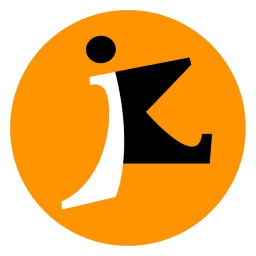The brand-new project, Refashionized – Fashion Evolution towards Sustainability – has officially started and we are excited to share our news!
On 5-6 July, the kick-off meeting of Refashionized was held at the Town Hall of Panorama, in Thessaloniki-Greece, organized by Catwalk project.
The JKPeV team coordinated the meeting – Myrto-Helena Pertsinidi, Doreen Siegmund and Stefan Kiehne – explaining the project objectives, the need to implement such a project, the expected results and the project’s impact on different levels.
The representatives of the partner organizations had the opportunity to present their organizations. We are glad to have on board the Technical University of Valencia-Spain – UPV that have expertise in textile engineering and in developing online courses, Lottozero Collective from Prato-Italy that have a long experience in sustainable fashion, KAINOTOMIA from Larissa-Greece – our long-lasting partner that have great experience in developing educational materials, Cellock from Limassol-Cyprus – a software and hardware company with expertise in online game design, and the Catwalk project from Thessaloniki-Greece whose great dedication to children and teenagers’ education on fashion and cloth making inspired us to initiate this project. Jugend- & Kulturprojekt e.V. having a vast experience in coordinating EU-funded projects and proposal writing will be leading the #Refashionized project.
Our main goal is to educate young people and educators on the history of fashion and its evolution towards a sustainable future whilst raising their awareness of fast fashion’s ecological footprint and its negative impact on human rights and the society. Young people as well as youth workers and educators will learn how to create their own clothes and accessories that will be sustainable and eco-friendly plus they will not cost a fortune. Critical thinking, creative, entrepreneurial, cooperation and presentation skills of our target groups as well as team spirit will be encouraged through innovative learning methods and tools.
2 Corners will be created which will include the following outputs:
The Trainer’s Corner will address the needs of the trainers through the production of the following outputs:
- The “History of Fashion Booklet” – a booklet about fashion history in the 20th century, raising awareness of the evolution of fashion and its impact on the society, global economy, and the environment.
- The “Sustainable Fashion Booklet”, which is focused on the environmental impact of the fashion industry today, explaining why and what protective measures are being taken and what the future needs are.
- A Toolkit for trainers that includes practical ways to teach how to reuse old clothes and garments and a Methodology based on non-formal and experiential education.
In order to address the learning needs of young people in the best possible way, the Learner’s Corner will include the following outputs:
- The “Refashionized online course” aims to provide theoretical knowledge on the history of fashion and sustainable fashion through inquiry-based learning while giving the opportunity to the learners to put into practice what they have learned through quizzes, assignments, and self-assessment activities.
- A “Sustainable Fashion Glossary” – an interactive compendium which aims to familiarize young people with the terminology of sustainable fashion through crosswords.
- The “How to Upcycle Videos” will demonstrate in just a few minutes how to transform used fabrics and old garments into clothes and accessories in easy-to-follow steps.
- The “How to Create your own Portfolio” Guide which will help young people design and develop their own fashion portfolio with photos of the clothes and accessories they have created and the process they follow, text which explains what kind of materials they use and how they made their creations.
- The “Sustainable Fashion online game” will familiarize in a fun and interactive way young people with the life cycle of clothes and accessories and their ecological footprint in order to understand in depth what it takes to produce a piece of cloth and what its effects on people and the environment are.
This project is an Erasmus+ KA2 large-scale cooperation partnership funded by the European Union.

Funded by the European Union. Views and opinions expressed are however those of the author(s) only and do not necessarily reflect those of the European Union or the European Education and Culture Executive Agency (EACEA). Neither the European Union nor EACEA can be held responsible for them.



























